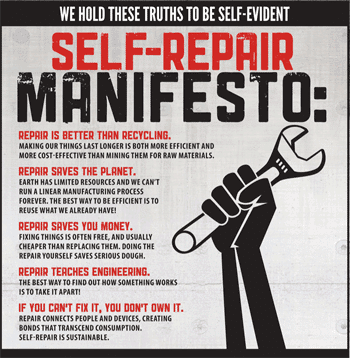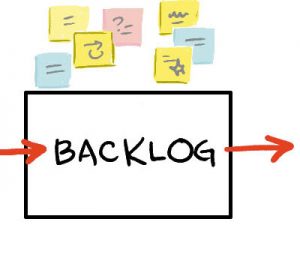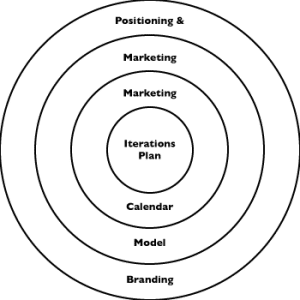 Jack Skeel, co-founder of AgencyAgile, wrote a fascinating blog post yesterday Defining Agile Marketing, Part 1: You Say You Want A Manifesto? Jack does a wonderful job summarizing the origins of the Agile Development Manifesto and putting into context the forces that led to the development of that manifesto. Jack identifies the “citizens” who felt the pain and drove the creation of the manifesto, he outlines the problems that led to the need for a manifesto, and he articulates the value of the manifesto in addressing those problems and revolutionizing software development.
Jack Skeel, co-founder of AgencyAgile, wrote a fascinating blog post yesterday Defining Agile Marketing, Part 1: You Say You Want A Manifesto? Jack does a wonderful job summarizing the origins of the Agile Development Manifesto and putting into context the forces that led to the development of that manifesto. Jack identifies the “citizens” who felt the pain and drove the creation of the manifesto, he outlines the problems that led to the need for a manifesto, and he articulates the value of the manifesto in addressing those problems and revolutionizing software development.
Jack then astutely suggests that marketers must answer the same questions today: who are the citizens that feel the pain, what problems are driving the need for an Agile Marketing Manifesto, and do we need a new manifesto to address these problems? The blog post ends with the unarguable proposition “Let’s make sure we understand (and agree upon) what it is we’re talking about, and what we need Agile to help us out with.”
Wonderful! Jack cuts right to the heart of the matter and issues a challenge to all of us that care about and write about Agile Marketing. Thanks, Jack.
I’ve been thinking about this for some time, and here are my thoughts on the same questions.
Who Needs an Agile Marketing Manifesto?
Jack correctly identifies that for the Agile Development movement it was the “Team”, the people who were responsible for building software, that were the citizens. Then I think he goes astray in suggesting that Agile Marketing is different, less of a citizenry and more of a society. In the years leading up to the publishing of the Agile Development Manifesto, it wasn’t only the developers who felt the pain: the business units felt pain when the delivered software was late or didn’t meet their needs or was cancelled altogether. Marketing felt the pain when they developed marketing materials for what they thought was being delivered (as they read the specifications), only to revise them when they understood what was really being delivered. Sales felt the pain when they apologized to customers for cancelled projects or missing functionality.
The developers introduced a concept known as “chickens and pigs”. You know the old joke, in a ham-and-egg breakfast, the chicken is involved, but the pig is committed. In this analogy, the developers are the pigs, and the chickens are everyone else who is impacted by or involved in the project.
Marketing has a similar dynamic. The people who do the work of marketing – who write the ads, come up with the creative, develop the positioning, write the inbound marketing papers, do search engine optimization, optimize the conversion process – are the pigs, and everyone else (the clients, the sales department, management) are the chickens. Both pigs and chickens need an Agile Marketing Manifesto (or the results that come from adoption of the manifesto), but it is the pigs who are the citizenry, in Jack’s terms. The society is the broader audience, including the chickens as well as the pigs.
I have no doubt that the “pigs” of marketing feel the pain. Whenever I speak about Agile Marketing and in the comments that I get on my blog, I can see the pain. I can see that marketers want a better way to deliver the results that are expected of them and that they want to deliver. So what are the specifics of the pain that marketers experience?
The Dysfunctional Room that Marketing Lives In
Rohn Jay Miller, one of the presenters at SprintZero, coined this phrase, and I think it’s an accurate description of the current state of marketing. I’ve been involved with marketing for almost thirty years, and marketing has changed more in the last 5-10 years than at any other time during my career. I think there are seven “pain points” that are driving the need for an Agile Marketing Manifesto.
Speed of Change
Many marketers feel like they’re on a runaway train, traveling at an uncontrollably fast speed. New channels spring up every month: Pinterest, Instagram, Quora, Sulia. New tools are available for reputation management, tracking paid, earned and owned media, attribution, targeting and many other aspects of marketing. New influencers become important. Developers, using Agile Development methodologies, are shipping new versions of the products every few weeks. Marketers are struggling to keep up.
Speed of Response
David Meerman Scott has articulated this problem in his books Real-Time Marketing and PR and Newsjacking. It’s no longer acceptable to wait days and weeks to respond to a competitor’s actions, to a potentially brand damaging event or a newsjacking opportunity. Marketing must respond in hours, not days. Marketers are struggling to accomplish this on top of everything else that they have to do.
Fractured and Disrupted Channels of Communication
Jack mentions this pain as well. He’s right in saying “The Proliferation of New Channels has made collaboration both more essential, yet much, much harder.” The customer doesn’t care if the people who control your web site aren’t the same people who control your social media who aren’t the same people that comprise the sales or the service organization. They think of you as one organization, one brand, and they want consistent communication across all channels, including ones that you may not control. Marketers are struggling with this.
The Customer Controls the Buying Process
Google calls this the Zero Moment of Truth, a phrase that hasn’t really caught on. But everyone is aware that buyers begin the buying process with a search, usually on Google, and they may complete the buying process without ever encountering marketing’s traditional methods of promotion (advertising, PR, direct sales force, direct marketing, etc). Marketers are emphasizing SEO, SEM, Inbound Marketing and other techniques to address this change in the buying process, but for many, it still feels difficult and out of their control.
Balkanized and Underutilized Marketing Intelligence
Jack identifies this pain point in his post, and I couldn’t agree more. We now have much more data and it is easier than ever to measure (in some ways) the impact of our campaigns, but the data is often in silos. The data in our CRM systems doesn’t match or get used by our web sites, or perhaps by our online advertising. There is no one view of the customer. Marketers are struggling with the implications of big data, and with constructing marketing dashboards with the right KPIs to measure and improve their business.
Limited Resources
During the great recession, marketing departments were among the hardest hit, and although there has been some re-hiring, very few marketing departments feel like they have enough people or enough budget to address the challenges that they face. They must constantly make hard calls, prioritizing the most important spending of both their time and money, in the face of constantly changing inputs from other departments.
Role of Marketing
Jack correctly identifies that the definition of marketing has blurred in recent years. He asks the question does marketing include logistics? Well, yes, for some businesses, marketing probably does include logistics.
I’ve always liked Armstrong and Kotler’s definition of marketing:
The aim of marketing is to create value for customers and capture value from customers in return.
Creating and capturing value from customers. If that includes logistics (which it surely does for a company like Amazon, Zappos or UPS), then that’s part of marketing. If that includes beautiful packaging (like that of Apple products), then that’s part of marketing. But not all companies understand or accept this broad mandate for marketing, and many marketers struggle to fulfill their role without control over some of the basic aspects of the customer value creation process.
But Do We Need an Agile Marketing Manifesto?
I think all of these pain points, and my experience in talking to the citizenry, argue that we need something. But the question remains, is a manifesto the thing that we need, and if so, do we need a new manifesto, or can we just make do with a slightly tweaked version of the Agile Development Manifesto?
To answer this question, I need to talk about where we need to go. What would marketing look like if a revolution took place similar to the revolution inspired by the Agile Development Manifesto. I’ll address this in my next post, as this one is already quite lengthy.




Globalization, light speed to market, plethora of channels (and their management, not to mention localization in 10 or more languages), too few resources, rapidly changing priorities – We hear you, we live it. Looking forward to your next post.
Globalization, light speed to market, plethora of channels (and their management, not to mention localization in 10 or more languages), too few resources, rapidly changing priorities – We hear you, we live it. Looking forward to your next post.
Pingback: Marketing 2022: The Future of Marketing is Agile
Pingback: Marketing 2022: The Future of Marketing is Agile
Pingback: Marketing Tips from Chris Guillebeau's The $100 Startup
Pingback: Marketing Tips from Chris Guillebeau's The $100 Startup